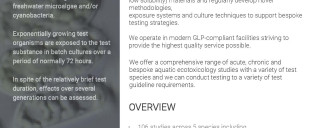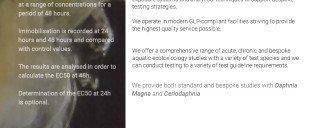Radiolabelling; Advantages for Testing
This paper provides an overview of the potential benefits of radiolabelled vs non-radiolabelled test substances in environmental fate and physical chemistry studies.

OECD Guidelines referenced: OECD 106; OECD 111; OECD 305; OECD 307; OECD 308; OECD 309; OECD 314; OECD 316.
The use of radiolabelled test materials to study the environmental fate and physical chemistry studies detailed above is standard practice for good reason. While it is possible to perform the studies without a radiolabelled test substance, the information gained in a non-radiolabelled test system will be limited and less robust than would be obtained using a radiolabel.
While the initial costs associated with radiosynthesis can be high, this can be outweighed by the cost of significantly more analytical method development to support non-radiolabelled studies which can often result in equal or higher costs and with less benefit.
Running studies without a radiolabel carries a risk that not all endpoints or data requirements will be met.

Sign up to receive the latest news and scientific insight from Scymaris.
This website uses cookies to ensure you get the best experience. Learn more




